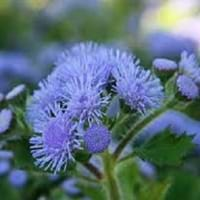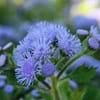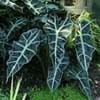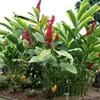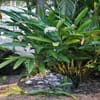Life Span
Perennial
Perennial
Type
Tender Perennial
Flowering Plants, Fruits, Trees
Origin
Hybrid origin
Central America, Europe, North America
Types
Blue danube
Hawaii
Blue Mink
Bavaria
Not Available
Number of Varieties
Not Available
Habitat
Pastures, Roadsides, Tropical regions, wastelands
Hedge, Scrubs, Woods
USDA Hardiness Zone
10-13
4-8
AHS Heat Zone
12-1
Not Available
Sunset Zone
A1, A2, A3, H1, H2, 1a, 1b, 2a, 2b, 3a, 3b, 4, 5, 6, 7, 8, 9, 10, 11, 12, 13, 14, 15, 16, 17, 18, 19, 20, 21, 22, 23, 24
Not Available
Habit
Cushion/Mound-forming
Not Available
Flower Color Modifier
Not Available
Not Available
Leaf Color in Spring
Green
Dark Green
Leaf Color in Summer
Green
Green
Leaf Color in Fall
Green
Brown, Green, Light Yellow
Leaf Color in Winter
Green
Not Available
Leaf Shape
Heart-shaped
Oblong
Plant Season
Spring, Summer, Fall, Winter
Summer
Sunlight
Full Sun, Partial Sun
Full Sun, Partial shade
Type of Soil
Clay, Loam, Sand
Loamy
The pH of Soil
Acidic, Neutral, Alkaline
Neutral
Soil Drainage
Well drained
Well drained
Bloom Time
Indeterminate
Fall, Summer
Tolerances
Drought
Drought
Where to Plant?
Ground, Pot
Ground
How to Plant?
Seedlings, Stem Planting
Grafting, Seedlings, Transplanting
Plant Maintenance
Medium
Medium
Watering Requirements
Keep the ground moist but not water-logged, Requires regular watering, Water twice a day in the initial period
Medium
In Summer
Lots of watering
Lots of watering
In Spring
Moderate
Moderate
In Winter
Average Water
Average Water
Soil pH
Acidic, Neutral, Alkaline
Neutral
Soil Type
Clay, Loam, Sand
Loamy
Soil Drainage Capacity
Well drained
Well drained
Sun Exposure
Full Sun, Partial Sun
Full Sun, Partial shade
Pruning
Cut or pinch the stems, Don't prune in the fall, Prune to stimulate growth, Remove damaged leaves, Remove short twigs
Prune when plant is dormant, Remove dead or diseased plant parts
Fertilizers
All-Purpose Liquid Fertilizer
All-Purpose Liquid Fertilizer
Pests and Diseases
Red blotch
Aphids, Curculio occidentis, Japanese Beetles, Leaf Rollers, Leafminer, Mites, Red blotch, sawflies, Scale, Stink bugs
Plant Tolerance
Drought
Drought
Flower Petal Number
Single
Single
Foliage Texture
Medium
Medium
Foliage Sheen
Matte
Matte
Attracts
Butterflies
Not Available
Allergy
no allergic reactions
Digestive Problems, Respiratory problems
Aesthetic Uses
Showy Purposes
Showy Purposes
Beauty Benefits
Not Available
Beautiful Skin
Edible Uses
Not Available
Yes
Environmental Uses
Air purification
Food for birds
Medicinal Uses
Fever, Headache, Rheumatoid arthritis
Anthelmintic, Antibacterial, Astringent, Hypnotic, Laxative, Refrigerant
Part of Plant Used
Whole plant
Fruits
Other Uses
Used as a nemiticide, Used as an insecticide
Edible syrup, Jam, Jelly, Used As Food
Used As Indoor Plant
Yes
No
Used As Outdoor Plant
Yes
Yes
Garden Design
Bedding Plant, Container, Edging, Hanging Basket, Mixed Border, Tropical
Not Available
Botanical Name
AGERATUM 'Blue Hawaii'( HAWAII SERIES)
Malus sylvestris
Common Name
Ageratum, Blue Hawaii Ageratum, Blue Mink, Flossflower
European crab apple
In Hindi
Ageratum
european crab apple
In German
Ageratum
Der Holzapfel, Europäischer Wildapfel
In French
Ageratum
Le Boquettier, le Pommier sauvage ou Pommier des bois
In Spanish
Ageratum
Malus sylvestris, el Manzano silvestre, manzano silvestre europeo
In Greek
Ageratum
Ευρωπαϊκή μήλο καβουριών
In Portuguese
Ageratum
Malus sylvestris
In Polish
Ageratum
Jabłoń dzika
In Latin
Ageratum
european crab apple
Phylum
Tracheophyta
Magnoliophyta
Class
Magnoliopsida
Magnoliopsida
Family
Asteraceae
Rosaceae
Clade
Angiosperms, Asterids, Eudicots
Angiosperms, Eudicots, Rosids
Tribe
Eupatorieae
Not Available
Subfamily
Asteroideae
Not Available
Number of Species
Not Available
Season and Care of Ageratum and European Crab Apple
Season and care of Ageratum and European Crab Apple is important to know. While considering everything about Ageratum and European Crab Apple Care, growing season is an essential factor. Ageratum season is Spring, Summer, Fall and Winter and European Crab Apple season is Spring, Summer, Fall and Winter. The type of soil for Ageratum is Clay, Loam, Sand and for European Crab Apple is Loamy while the PH of soil for Ageratum is Acidic, Neutral, Alkaline and for European Crab Apple is Neutral.
Ageratum and European Crab Apple Physical Information
Ageratum and European Crab Apple physical information is very important for comparison. Ageratum height is 15.20 cm and width 20.30 cm whereas European Crab Apple height is 25.00 cm and width 20.00 cm. The color specification of Ageratum and European Crab Apple are as follows:
Ageratum flower color: Blue
Ageratum leaf color: Green
European Crab Apple flower color: White
- European Crab Apple leaf color: Dark Green
Care of Ageratum and European Crab Apple
Care of Ageratum and European Crab Apple include pruning, fertilizers, watering etc. Ageratum pruning is done Cut or pinch the stems, Don't prune in the fall, Prune to stimulate growth, Remove damaged leaves and Remove short twigs and European Crab Apple pruning is done Prune when plant is dormant and Remove dead or diseased plant parts. In summer Ageratum needs Lots of watering and in winter, it needs Average Water. Whereas, in summer European Crab Apple needs Lots of watering and in winter, it needs Average Water.
